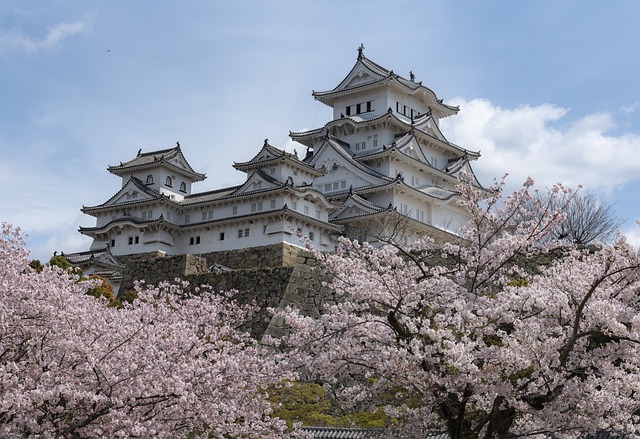Florence's rich history begins with its indigenous roots and is defined by the Siuslaw River, which facilitated trade and attracted settlers. In the late 19th century, the logging industry boomed, transforming the city into a thriving urban center. Historical landmarks showcase Florence's diverse cultural identity, blending maritime heritage, logging past, and artistic influences that have shaped its unique character from ancient times to today.
Florence, nestled along the picturesque Siuslaw River, boasts a rich indigenous history intertwined with the city’s development. This article delves into Florence’s roots, exploring its founding and early settlers, and how the Siuslaw River shaped its maritime identity. We uncover the logging industry’s impact on transforming Florence from forest to bustling metropolis. Furthermore, it highlights the cultural evolution of diverse communities and uncovers historical landmarks that reflect the city’s unique past and present identities.
- Florence's Founding and Early Settlers: Unraveling the Indigenous Roots
- The Maritime Heritage: Siuslaw River and its Role in Shaping Florence
- Logging Industry's Impact: From Forest to City
- Cultural Evolution: A Journey Through Florence's Diverse Communities
- Historical Landmarks: Exploring Florence's Past and Present Identities
Florence's Founding and Early Settlers: Unraveling the Indigenous Roots

Florence’s story begins with its founding, deeply rooted in the rich indigenous history of the region. The area that is now known as Florence was once home to various Native American tribes, including the Siuslaw people, who had a profound impact on the city’s early development. The Siuslaw River, a significant geographic feature, played a crucial role in shaping the community’s maritime history and trade networks. For centuries, these indigenous communities thrived, cultivating the land and fostering a deep connection with the natural environment.
The founding of Florence is intricately linked to the logging industry that boomed in the late 19th century. Settlers were drawn to the region by the abundant timber resources along the Siuslaw River, which fueled the city’s growth and cultural evolution. Historical landmarks scattered throughout Florence serve as testaments to this period, reflecting the hard work and resilience of both early settlers and the indigenous tribes who came before them.
The Maritime Heritage: Siuslaw River and its Role in Shaping Florence

The Siuslaw River, a vital artery that flows through Florence’s heart, played a pivotal role in shaping its founding history and maritime heritage. Since the early days, this river has been a lifeline for the region, facilitating trade, transportation, and the cultural exchange that laid the foundation for Florence’s diverse community. The indigenous tribes who inhabited these lands initially relied on the river for sustenance and travel, contributing to the rich tapestry of Florence’s cultural evolution.
Florence’s maritime history is deeply intertwined with the Siuslaw River, which fueled its logging industry during the 19th and early 20th centuries. Steamboats once navigated these waters, transporting logs to market and bringing new settlers to the area. The river’s significance extends beyond economic activities; it also serves as a historical landmark, reflecting the town’s transformation from a modest beginning to a thriving coastal city. Today, visitors can explore the Siuslaw River’s legacy through various Florence historical landmarks, offering a glimpse into the region’s past and its enduring connection with the sea.
Logging Industry's Impact: From Forest to City

The logging industry played a pivotal role in shaping Florence’s history and cultural evolution. Starting from its founding days, Florence’s connection to the Siuslaw River has been integral to its development as a bustling city. The river, with its abundant timber resources, became the lifeblood of the region, fueling both economic growth and the city’s maritime history. Over time, logging became a cornerstone industry, transforming Florence from a forest-rich landscape into a thriving urban center.
This transformation had significant implications for Florence’s historical landmarks and cultural tapestry. The demand for lumber led to the establishment of numerous mills along the Siuslaw River, contributing to the city’s architectural heritage. As Florence grew, so did its infrastructure, reflecting the logging industry’s influence in shaping the urban fabric. Today, these historic sites serve as a reminder of Florence’s past, where the forest and the sea came together to forge a unique cultural identity rooted in its maritime and logging history.
Cultural Evolution: A Journey Through Florence's Diverse Communities

Florence’s rich history is a vibrant tapestry woven with threads from diverse communities and cultural influences. Since its founding, the city has evolved through various stages, each leaving an indelible mark on its identity. The Florence we know today stands at the intersection of ancient traditions and modern influences, shaped by its maritime heritage, logging industry, and the natural beauty that surrounds it along the Siuslaw River.
The maritime history of Florence is a testament to the resilience and resourcefulness of its early settlers who navigated the treacherous waters, trading with neighboring tribes and shaping the city’s economic landscape. The Siuslaw River, a significant geographical feature, not only served as a vital transportation route but also played a crucial role in the region’s cultural evolution. As Florence grew, so did its logging industry, contributing significantly to its development before the advent of modern industries. This historical journey is reflected in the city’s architectural landmarks and cultural practices, showcasing the diverse influences that have evolved over time.
Historical Landmarks: Exploring Florence's Past and Present Identities

Florence’s rich history is woven into its very fabric, with each landmark and tale contributing to a vibrant tapestry that tells the story of this coastal town. From its founding as a small settlement along the Siuslaw River, the city has evolved through various eras, shaping its unique identity. The river, a historical lifeline, played a pivotal role in Florence’s early development, serving as a crucial trade and transportation route for indigenous tribes and later, during the maritime era, facilitating commerce and cultural exchange.
The town’s cultural evolution is evident in its diverse historical landmarks. While logging once dominated the local economy, leaving an indelible mark on the landscape, Florence has also embraced its artistic heritage and become a hub for creative expression. These contrasting facets—its maritime past and logging history—coexist harmoniously, reflecting the town’s adaptability and resilience. Today, visitors can explore these layers of history, from ancient indigenous traditions to the modern cultural scene, making Florence a fascinating destination that bridges the gap between its rich heritage and its dynamic present.
